Experiences of the COVID-19 pandemic and young people’s wellbeing.
In Aotearoa, the COVID-19 pandemic has been associated with greater depression and anxiety compared to population norms (1) and worry about COVID-19 has been correlated with anxiety, depression, and stress (2). However, few studies have examined the wellbeing of young New Zealanders. Internationally, several studies have reported the negative effects of the pandemic on young people’s wellbeing (3, 4). The impact of the pandemic has also widened existing inequities for New Zealand young people and their families. The overall burden of disease has not been equitable, with Māori and Pacific people overrepresented in infection and mortality statistics (5, 6).
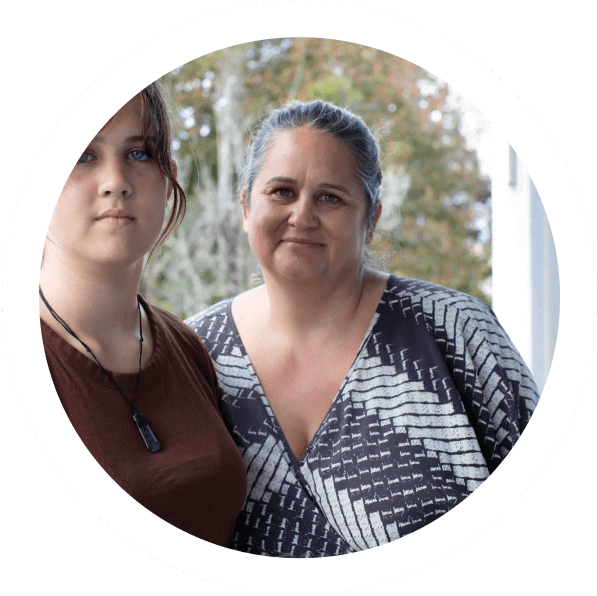

Concerns have been raised about the potential effects of the COVID-19 pandemic on New Zealand young people’s wellbeing. Longitudinal studies like Growing Up in New Zealand can provide unique, timely evidence of the health burden associated with the COVID-19 pandemic (7).
This report explores who in the Growing Up in New Zealand cohort was most worried about the COVID-19 pandemic at 12 years and how this relates to young people's wellbeing.
The 12-year data collection wave (DCW) asked young people about their worries and fears due to COVID-19. Three questions about COVID-19 were included, each asking about a different aspect of their lives: missing out on school work, family finances and people getting along at home. These three questions were combined to form a sum score to determine the factors associated with worries and fears due to COVID-19. In this topic, we explore who was most worried about the COVID-19 pandemic and how this relates to young people's wellbeing. Three measures of wellbeing were used in this report: Depression symptoms, anxiety symptoms and health related quality of life (QOL).
Depression, anxiety and QOL were self-reported by young people using standard short form questionnaires.
- Depression symptoms were measured using the 10-item Centre for Epidemiologic Studies Depression Scale for Children (CES-DC-10) (8).
- Anxiety symptoms were measured using the 8-item Patient-Reported Outcomes Measurement Information System (PROMIS) Paediatric Anxiety - Short Form 8a questionnaire (using Item Bank v2.0) (9).
- QOL was measured using the 10-item KIDSCREEN questionnaire which assesses subjective health and psychological, mental and social wellbeing (10).
Insight one
Transgender or non-binary young people reported more worries and fears about COVID-19, followed by cisgender girls and cisgender boys.
Since the start of the pandemic, there have been several reports of differences in perceptions or impacts of the pandemic by gender. Primarily this has focussed on differences between adult men and women. However, a recent study reported that the pandemic had a greater impact on transgender and gender diverse youth than cisgender youth (11). Growing Up in New Zealand data from the 12-year DCW is consistent with this report, with transgender or non-binary young people worrying most due to the pandemic.
Transgender or non-binary young people were more worried than cisgender boys about:

Missing out on school work due to COVID-19
70.7% (n = 520) of transgender or non-binary young people were at least sometimes worried about missing out on school work due to COVID-19.
72.0% (n = 1201) of cisgender girls were at least sometimes worried about missing out on school work due to COVID-19.
57.6% (n = 1166) of cisgender boys were at least sometimes worried about missing out on school work due to COVID-19.

Their family finances due to COVID-19
56.3% (n = 414) of transgender or non-binary young people were at least sometimes worried about their family finances due to COVID-19.
45.4% (n = 757) of cisgender girls were at least sometimes worried about their family finances due to COVID-19.
39.8% (n = 806) of cisgender boys were at least sometimes worried about their family finances due to COVID-19.

People in their home getting along due to COVID-19
52.9% (n = 389) of transgender or non-binary young people were at least sometimes worried about people in their home getting along due to COVID-19.
42.8% (n = 714) of cisgender girls were at least sometimes worried about people in their home getting along due to COVID-19.
41.5% (n = 840) of cisgender boys were at least sometimes worried about people in their home getting along due to COVID-19.

Overall, transgender or non-binary young people
(n = 618, mean = 2.9) were most worried, followed by cisgender girls (n = 1392, mean = 2.5) when compared to cisgender boys (n = 1767, mean = 2.0) (Figure 1).
Further details about this analysis can be found
in the PDF document.
.jpg)
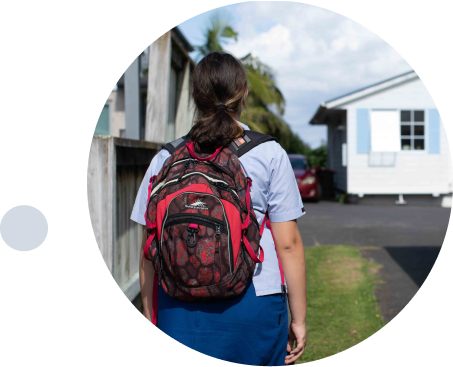
Insight two
Pacific and Asian young people were more worried about COVID-19.
COVID-19 has highlighted various health disparities, including ethnic and racial disparities (12). In New Zealand, Māori and Pacific people experienced the highest infection, hospitalisation, and mortality rates, as well as experiencing a higher burden of risk factors associated with these outcomes (5, 6). Young people who identify as Pacific or Asian were more worried about COVID-19 than those who identify as European. Young people who identified as Māori were more worried than those who identified as European, but this was not statistically significant after correcting for other factors in the multivariate model. See pdf for more details
Rangatahi Māori and Pacific young people were the most worried about their family finances due to COVID-19, followed by ‘Other’, MELAA, Asian, and Sole European young people.

50.8% (n = 491) of rangatahi Māori were at least sometimes worried about their family finances due to COVID-19.
51.4% (n = 368) of Pacific young people were at least sometimes worried about their family finances due to COVID-19.
45.5% (n = 290) of Asian young people were at least sometimes worried about their family finances due to COVID-19.
40.8% (n = 914) of Sole European young people were at least sometimes worried about their family finances due to COVID-19.
Overall, Rangatahi Māori, Pacific and Asian young people were more worried about COVID-19 compared with Sole European young people.
Further details about this analysis can be found in the PDF document.
Insight three
Higher deprivation was associated with greater worry about COVID-19.
The differences in risk factors, hospitalisation, and mortality rates of COVID-19 are not just prominent at the individual level. There are significant factors at the societal level that contribute to the observed disparities, such as socioeconomic position (13). Varying levels of vulnerability between people and places have important consequences on individual and community responses to the pandemic (14). For example, living in poor housing conditions (15) or high-deprivation areas were associated with an increased prevalence of COVID-19 infections (13).
Those living in the most deprived areas were most worried about missing out on school work due to COVID-19.
19.6% (n = 207) of young people living in the LEAST deprived quintile (1) were often or always worried about missing out on their school work due to COVID-19.
26.4% (n = 200) of young people living in the MOST deprived quintile (5) were often or always worried about missing out on their school work due to COVID-19.
Those living in the most deprived areas were most worried about their family finances due to COVID-19.
19.6% (n = 207) of young people living in the LEAST deprived quintile (1) were often or always worried about missing out on their school work due to COVID-19.
26.4% (n = 200) of young people living in the MOST deprived quintile (5) were often or always worried about missing out on their school work due to COVID-19.
Those living in the most deprived areas were most worried about people in their home getting along due to COVID-19.
11.4% (n = 120) of young people living in the LEAST deprived quintile (1) were often or always worried about the people in their home getting along due to COVID-19.
14.5% (n = 110) of young people living in the MOST deprived quintile (5) were often or always worried about the people in their home getting along due to COVID-19.

Overall, with increasing area-level deprivation, there were increasing worries and fears due to COVID-19. Young people living in the most deprived areas (quintile 5) had the highest worries and fears score (n = 607, mean = 2.7) compared to those living in the least deprived areas (quintile 1, n = 936, mean = 2.1) Figure 2.
Greater deprivation (measured using the DEP-17 score, which measures individual deprivation) was associated with increasing (worse) COVID-19 worries and fears.
Further details about this analysis can be found
in the PDF document.
See Snapshot 2: Material hardship.
Insight four
Strong child-parent relationships were associated with less worry about the COVID-19 pandemic.
At the 12 year DCW participants were asked about their relationship with their parent(s) using a subset of questions from the People in My Life tool (PIML) (16). To find out more about this tool see Snapshot 8: Relationships. Young people with stronger relationships with their parent(s) were less likely to be worried about COVID-19. Further details about this analysis can be found in the PDF document.
For every one unit increase in the parent child relationships score there was a 0.05 unit decrease in the COVID-19 worry and fear score Figure 3.
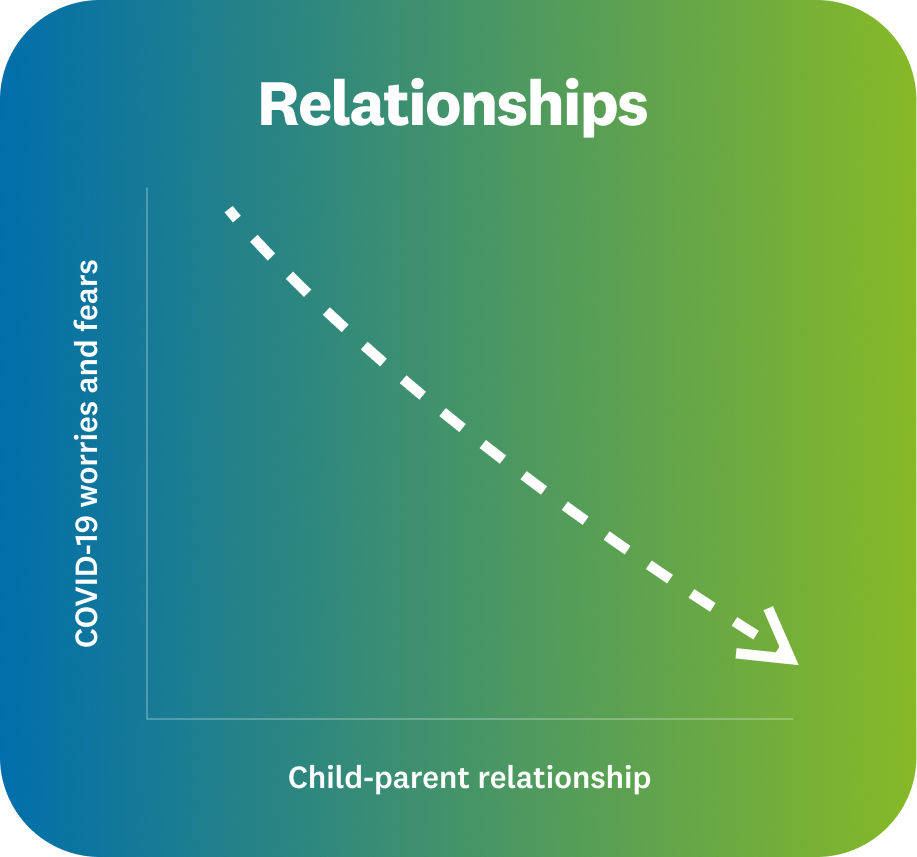
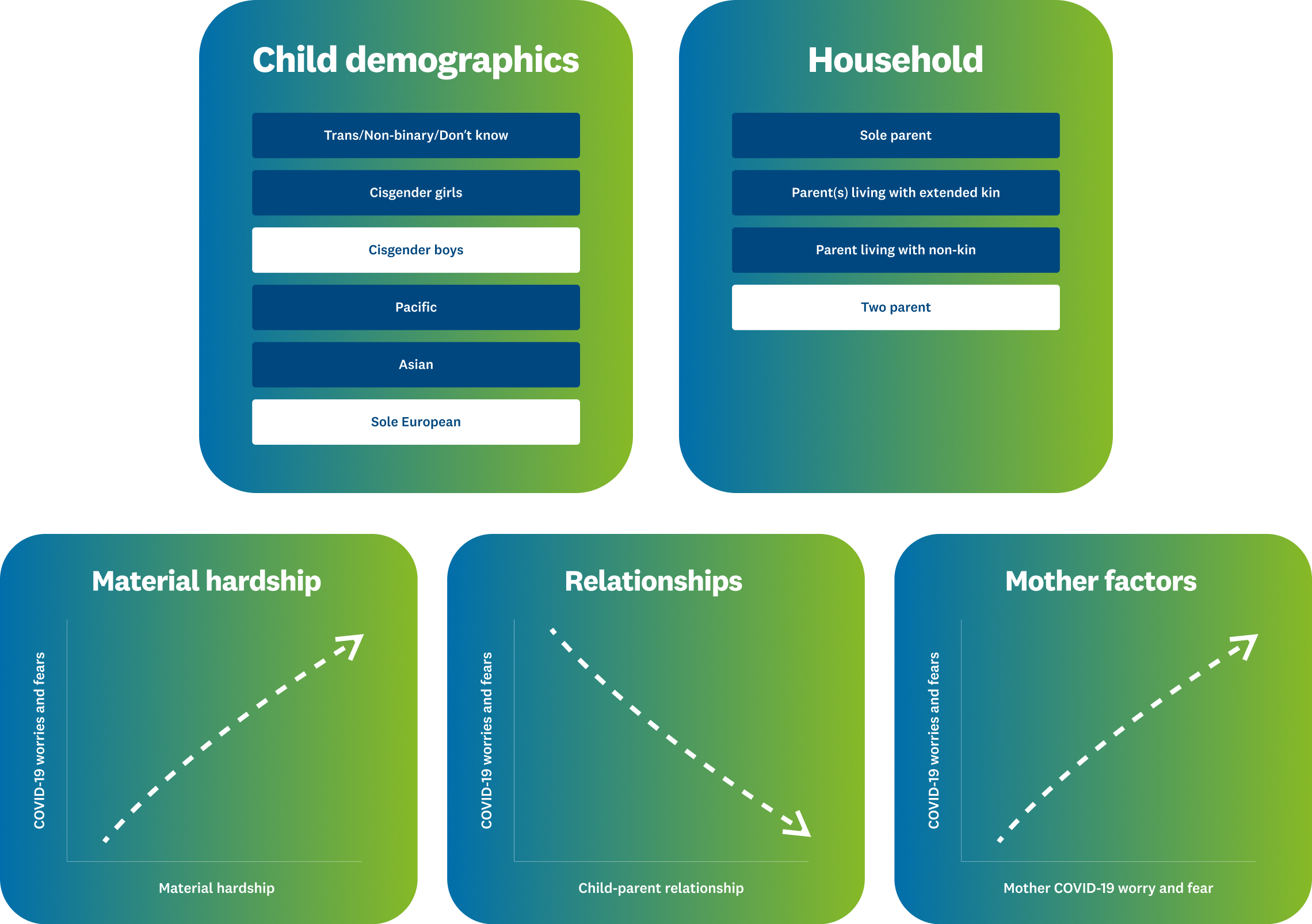
Further details about this analysis can be found in the PDF document.
Insight five
Greater worry about COVID-19 was associated with poorer mental wellbeing.
Depression and anxiety, indicators of mental wellbeing, have been examined in relation to worries and fears due to COVID-19. Growing Up in New Zealand has measured depression and anxiety at three time points over the past four years (at 8, 10 and 12 years of age). Overall, with increasing worries and fears due to COVID-19 the depression and anxiety score was greater.
When looking longitudinally at three timepoints (8,10 and 12 years of age):
Depression scores have increased over time with the mean depression scores differing by the degree of reported COVID-19 worries and fears (Figure 5).
In contrast to longitudinal depression scores, the average level of anxiety symptoms seems to have decreased from ages 8-12, the relationship between mean longitudinal anxiety scores and the degree of COVID-19 worries and fears remained (Figure 6).




Insight Six
Worry about COVID-19 was associated with poorer quality of life.
The association between COVID-19 worries and fears and health-related quality of life was examined for the three COVID-19 worries and fears questions individually as well as the COVID-19 worries and fears sum score. Overall, with increasing worries and fears due to COVID-19 the quality of life score was lower meaning those who were more worried about the impact of COVID-19 had worse quality of life scores.
Quality of life scores were lowest for young people who worried always or often about:
their family finances due to COVID-19 compared to those who worried sometimes or never Figure 7.
how people in their home were getting along due to COVID-19 compared to those who worried sometimes or never Figure 8.
Relevance for policy
and practice.

.png)
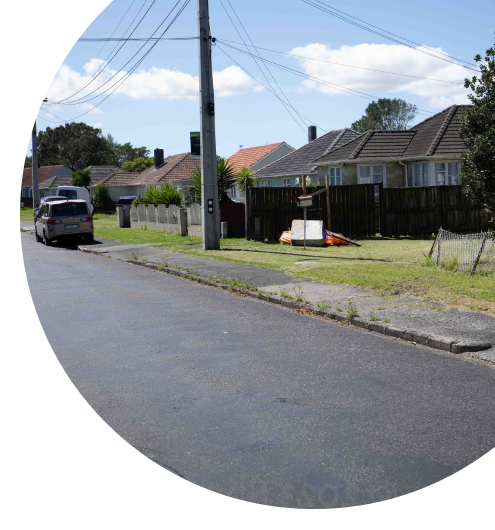
Financial worries and fears.
The economic instability that was experienced by parents during the pandemic has had an impact on over half of young people.
It is critical to consider that the financial implications of COVID-19 affect the entire family, by causing generally higher levels of worries and fear within the household. Therefore policy makers who are aiming to improve young people's quality of life should consider that measures which improve financial stability for households as a whole are likely to be beneficial in improving young people's quality of life, especially in emergencies.
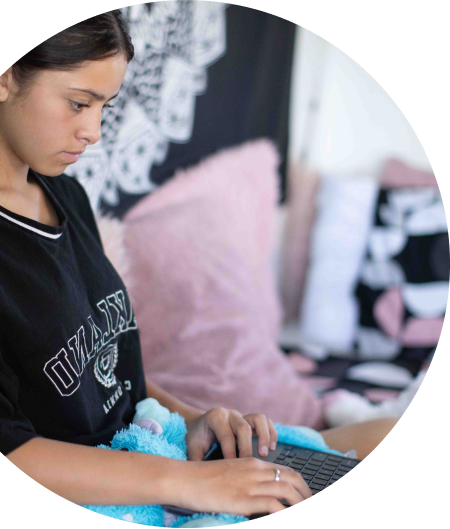

School work worries and fears.
Two-thirds of young people worried at least sometimes about missing out on school work due to COVID-19.
It is important to consider the ongoing impact school closures during COVID-19 will have on the learning needs of young people. At the policy level, ensuring resources are made available to help mitigate any learning loss, particularly for vulnerable and marginalised groups, will be critical.


Getting along at home worries and fears.
Almost half of all young people never or almost never worried about how people in their house were getting along.
Although it was less common than other worries, in terms of the impact this worry had on wellbeing, being worried about getting along at home had a similar impact to financial worries and fears.


Demographics.
Worries about the impact of COVID-19 on young people was not equally distributed in terms of demographics or the environment in which young people were growing up in.
Gender, ethnicity, and deprivation were all associated with worry about the impact of COVID-19. The same groups who experience social, economic, and educational inequities also experienced the most worry about the impacts of COVID-19. This supports previous evidence that COVID-19 has widened the socioeconomic gap in Aotearoa.
Transgender or non-binary young people were most worried about the impact of COVID-19. Given worry about the impact of COVID-19 was significantly associated with wellbeing outcomes, this finding indicates that the stressors associated with COVID-19 has exacerbated the health and wellbeing inequalities that exist among transgender and non-binary young people. Policy makers should consider this when working to reduce the ongoing impact of COVID-19.



Wellbeing.
Young people who experienced the most worry about the impact of COVID-19 also experienced the poorest health and wellbeing outcomes.
Worry about the impact of COVID-19 was associated with worse depression, anxiety, and quality of life scores. It is likely that COVID-19 has exacerbated mental health concerns, particularly for the most marginalised and for those who experienced these concerns pre-COVID. This highlights the importance of targeted and easily accessible mental health care for young people in Aotearoa. This is particularly important for transgender and non-binary young people who were both more worried and experienced poorer wellbeing.
References and
research methods
At Growing Up in New Zealand, we're passionate about advancing research and making sure our work is informed by a wide range of sources. That's why we've included a comprehensive list of references, along with an introduction and a detailed report of the research methods used to support the Growing Up in New Zealand study.
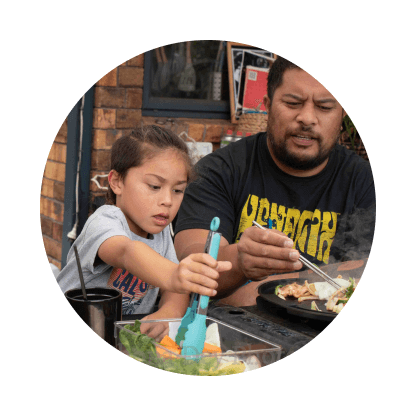
Read the full report
We’ve carried out more than 90,000 interviews and collected more than 50 million pieces of data to help inform policy and help give children the best start in life.
Explore other snapshots

%201.svg)




